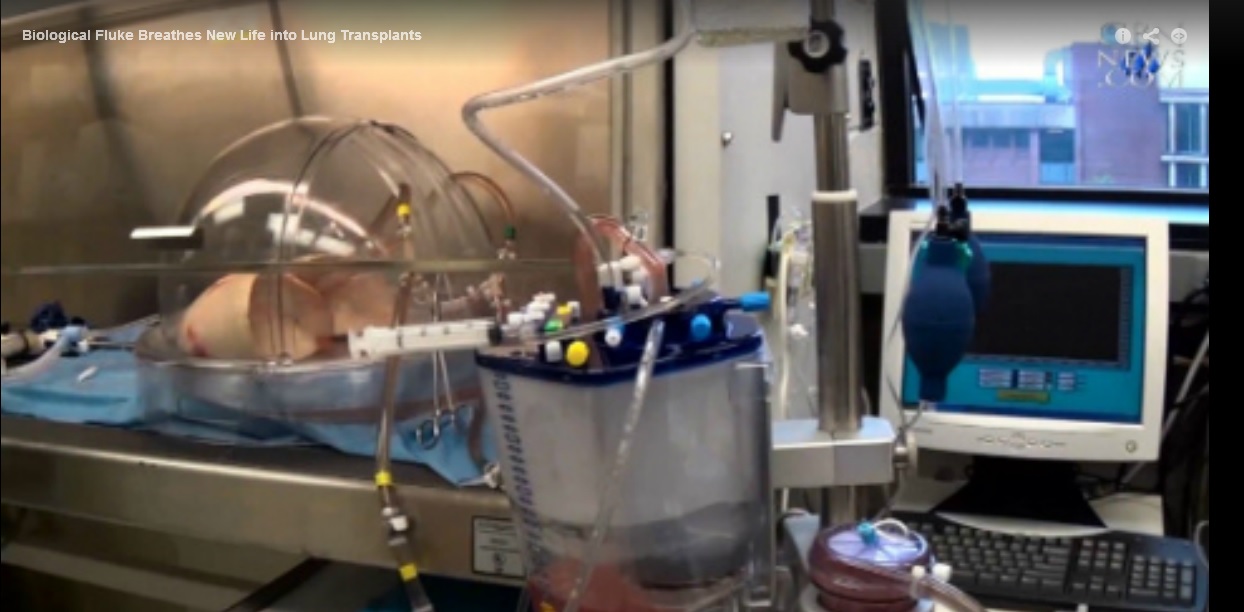
Thomas M. Egan‘s lung transplant research at UNC was recently featured on a TV broadcast on CBN News. Dr. Egan is principal investigator of a three-year, $4 million study funded by the National Institutes of Health (National Heart, Lung, and Blood Institute) to study assessment and transplantation of lungs from victims of sudden death. He is a professor of surgery in the UNC Division of Cardiothoracic Surgery and is internationally known for his research on lung transplantation.
Benjamin Haithcock, M.D., a thoracic surgeon who is surgical director of the UNC Lung Transplant Program and associate professor of surgery and anesthesiology at UNC, is also featured in the video. Dr. Haithcock is a co-investigator on Dr. Egan’s research study.
CBN President Pat Robertson became interested in the lung transplant research when he visited UNC after donating funds for a surgery simulation lab, where medical students, surgery residents and others are trained. Robertson was a heart surgery patient of Andy Kiser, M.D., who is chief of cardiothoracic surgery at UNC.
Dr. Egan’s research has focused on use of lungs for transplant from patients who have died suddenly, outside the hospital, and have not been on mechanical ventilation – these are known as non-heart-beating donors (NHBDs). He has shown that lungs are still viable after circulation stops because lung cells obtain oxygen after death from air in the air sacs and airways (other organs require blood circulation to obtain oxygen). His lab has perfused and ventilated human lungs outside the body (ex vivo) to determine if they are suitable for transplant and the lab has worked to show the safety of transplanting these lungs.
The project, which has FDA and UNC Institutional Review Board approval, could greatly increase the number of lungs available for transplant. Currently, solid organs for transplant come primarily from patients who have experienced brain death and have been on mechanical ventilation before controlled circulatory arrest. However, many lungs from these donors cannot be used for transplant because of inflammation or infection that can occur as a result of brain death.
Watch the video here.
